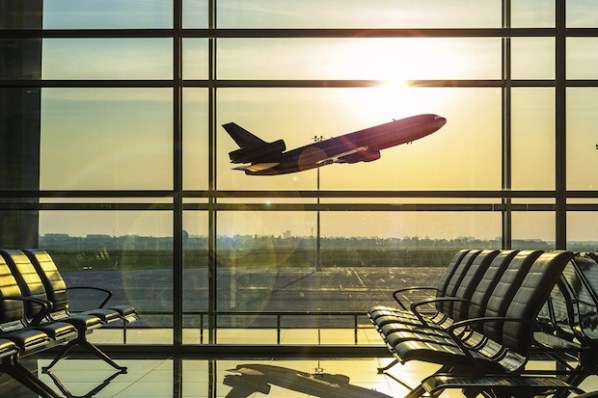Investing £33 billion in HS2 — £46 billion if you accept the Taxpayers’ Alliance’s calculation — won’t boost us out of this triple dip, but it might ease the one after next, early in the reign of hugely popular, three-times-married King Harry, in whose favour his elder brother will abdicate, Dutch-style, after his 50th birthday. It’s a constant theme of this column that all prediction, even one year ahead, is (in Sir Mervyn King’s phrase) ‘a mug’s game’: every element of that first sentence may turn out to be bunkum. Even so, the announcement of second-phase HS2 routes to Manchester and Leeds, with stations for Derby, Nottingham and Sheffield, makes a far more compelling case than the first-phase promise of a few minutes off the London-to-Birmingham run in exchange for dynamiting the Chilterns.
And that case deserves support without excessive scrutiny of the numbers attached, which constitute little more than a ‘Yes, Minister’ exercise in arse-covering. I’ve said here before that ‘a high-speed rail network between major cities is a 21st-century essential and I look forward to exercising my pensioner’s rail pass on it’, but that doesn’t mean I place any credence on the claim that it will generate ‘£47 billion of business benefits over 60 years’ — based on highly imaginative valuations of ‘business time’ saved by faster journeys. Likewise, ‘70,000 jobs in Leeds railway revolution’, reported almost as fact by the Yorkshire Evening Post, is an example of think-tank futurology that will never be measurable against real outcomes because so many other factors will have changed unforeseeably by the time the line comes into operation in the 2030s.
So, like great infrastructure schemes of the past, this one demands to be embarked upon as an act of faith in the future, underpinned by the more reliable prediction that in 20 years’ time our highways will be gridlocked, our other railways will be overwhelmed by passenger demand, and no government will ever budget, year by year, enough to maintain them in decent order. Spokesmen for northern cities on the HS2 map all grasp that imperative, even as metropolitan sceptics of grands projets align themselves with rural protesters.
The real concern about HS2 must be that it will take so damned long to build. The Chinese would regard four years as a viable timetable for a project of this scale; Cornelius Van Horne, who completed the coast-to-coast Canadian Pacific Railway in five years in the 1880s, could have fitted HS2 into his weekends. The risk is that my rail pass and I will both expire long before my invitation arrives for the inaugural 82-minute run from Leeds to Euston.
Manchester model
Manchester will do better, by the way, with a 68-minute run that will cut the current journey time in half. Plus there will be an HS2 station at Manchester Airport — handy for George Osborne’s rich Cheshire constituents, but more importantly reinforcing the airport’s position as a major international transport and business hub. The company that has developed it so effectively, Manchester Airport Group (MAG), last week added Stansted to a portfolio that already includes East Midlands, Humberside and Bournemouth airports. Last week’s snow chaos also reminded us that MAG compares favourably on many counts with Heathrow’s operator, BAA, whose chief shareholders are the Spanish group Ferrovial and Qatari sovereign money. MAG, by contrast, remains (on an enlightened, hands-off basis) under public-sector control, two-thirds owned by the city of Manchester and adjacent authorities; following the Stansted deal, the other third is held by an Australian infrastructure investor, IFM, in turn owned by a consortium of pension funds.
Doubters fear that the £1.5 billion Stansted acquisition may be a step too far for this unusual hybrid, reinforcing the case for its privatisation put forward in these pages in 2007 by Graham Brady, Conservative MP for Altrincham and Sale West. A sell-off could create a £3 billion ‘Fund for Manchester’ or a £1,200 windfall for each of its households, he argued. But it could also drive MAG, like BAA, into the hands of shareholders who don’t seem to know how to run it properly. MAG can also be seen as a shining model of corporate biodiversity; and since it’s getting an HS2 rail station, perhaps it should bid to run the whole high-speed network.
Fred’s cursed leaf
My invitation to Davos got lost in the post, but who wants to dine on Alpine ragout — or even pizza with Dave — when you could be at home remembering Robert Burns with haggis and a dram? I enjoyed double measures this year, two nights running of the irrepressible joie de vivre of Scotland’s national poet triumphing over Yorkshire blizzard and storm. Burns’s financial affairs, like his love life, rarely ran straight, but in a week when RBS shareholders launched a £4 billion lawsuit against their collapsed bank and its former directors, I wondered what he would have thought of the demise of Scotland’s reputation for prudence — or perhaps he knew it was never really so.
His tenant-farming father William felt the impact of the collapse of the Ayr Bank in 1772, which destroyed the wealth of local landowners, and the poet was later chased for his own debts by the Bank of Scotland. He heaped praise on James Gracie, the Dumfries branch manager who treated him kindly, but Gracie himself went on to found a bank that failed, and died a bankrupt. So Burns might not have been as shocked as modern Scots by the disgrace of HBOS and RBS. And his ‘Lines Written on a Banknote’ in 1786 would make a nice tattoo on the buttocks of Fred Goodwin, who allegedly insisted that only notes bearing his own printed signature should be issued by ATMs at RBS headquarters, and who will now be obliged to emerge from exile or seclusion for the court case: ‘Thou cursed leaf! /Fell source o’ a’ my woe and grief!/… For lake o’thee I leave this much-lov’d shore/ Never perhaps, to greet old Scotland more!’







Comments